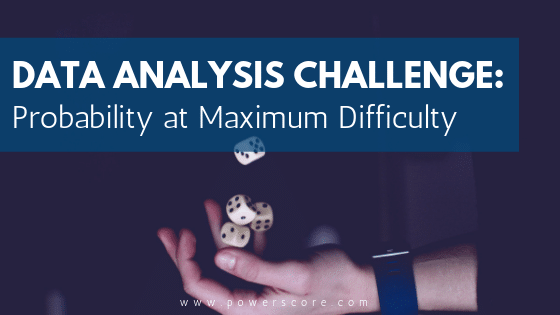Data analysis problems make up about one-quarter of GRE Quant, and most of them will bemuse and beguile the majority of test takers. In The Official Guide to the GRE, Practice Test 1 includes a probability question that only 15% of examinees got right when it was on a real exam. Think you can solve a very similar problem?
The Most Difficult Official GRE Data Analysis Question
Difficulty Level: 5 (Very High)
Lots of official GRE practice questions were once on the exam, and ETS often reports the percentage of test takers who answered them correctly. In all likelihood, the lower the percentage, the harder the question. For instance, the hardest official practice questions stumped all but 10% of examinees. Among data analysis problems, the lowest percentage—15%—belongs to a numeric entry question about probability. (See The Official Guide, Test 1, §6, 24.) Here’s a question much like it.
The Challenge
Pat has a bag of 24 candies, 2 of which are melted. Pat will select 2 candies simultaneously and at random from the bag. What is the probability that both of the candies selected will not be melted Give your answer as a fraction.
The Solution
Start with a simpler probability than what’s requested. Find the odds that Pat will grab 1 candy that’s not melted. You’ll need to use the probability formula.
P(event) = number of favorable outcomestotal possible outcomes
- P(select 1 unmelted candy) = unmelted candiestotal candies = 2224
Now, how do you calculate the odds that Pat selects 2 unmelted candies simultaneously? You use the same math that gets you the odds that Pat selects 2 unmelted candies without replacement. Whether Pat takes and keeps the 2 candies one after another or instead grabs both at the same time, 2 unmelted candies will be subtracted from the bag with neither being added back to it. So, next, find the probability that Pat, with 1 unmelted candy in hand, pulls a second one from the bag:
- P(select a 2nd unmelted candy) = unmelted candies − 1total candies − 1 = 2123
Finally, to calculate the odds that both candies selected are not melted, you multiply your two probabilities together. Use a calculator (just as you can on the exam) or cross-cancel and reduce to make the calculation a little easier.
- P(select 2 unmelted candies in a row without replacement) = 2224 × 2123 = 462552
- Cross-cancel, reduce, and then multiply: 114 × 723 = 7792
Since selecting and retaining 2 candies in quick succession has the same effect as selecting 2 simultaneously, you now have your answer. And since this question uses numeric entry, you don’t even need to reduce!
Ready for more? Check out some of the Hardest and Most Tested Math Topics on the GRE.


Leave a Reply
You must be logged in to post a comment.